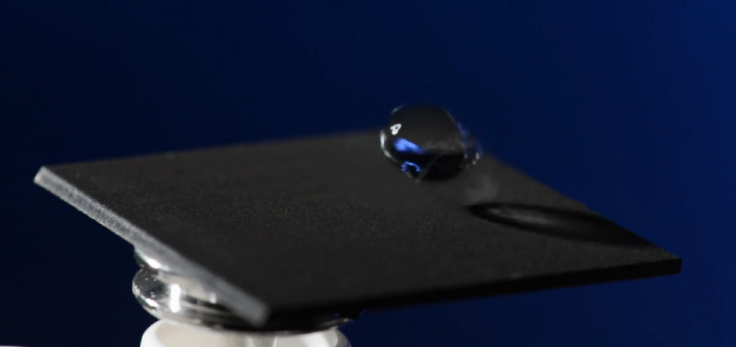Scientists Create Laser-Patterned Metal Surfaces That Are Self Cleaning And Water Repellent

A team of American scientists from the University of Rochester, New York, have successfully developed a technique to transform metals into extremely water repellent, or “super-hydrophobic” materials. The breakthrough, which was achieved using laser beams, could have potential applications in rust prevention, creation of efficient rainwater harvesting tanks and better sanitation facilities in developing nations, according to a statement released Tuesday by the university.
“The material is so strongly water-repellent, the water actually gets bounced off. Then it lands on the surface again, gets bounced off again, and then it will just roll off from the surface,” Chunlei Guo, a professor of optics at the University of Rochester and co-author of the paper published in the Journal of Applied Physics, said, in the statement.
In the paper, Guo and his colleague Anatoliy Vorobyev at the University's Institute of Optics, described the technique that was used to create the super-hydrophobic material. Unlike the currently used water-repellent metals that employ temporary coatings of hydrophobic materials like Teflon, the metals created using the laser pattern are permanent.
Guo and Vorobyev use extremely powerful, but ultra-short, femtosecond laser pulses to reshape the surface of the metals. Blasting the metals with these laser beams created micro-grooves on the surface that permanently altered its water-repelling properties.
“The structures created by our laser on the metals are intrinsically part of the material surface,” Guo said, in the statement, adding that these metals were much more slippery than Teflon. As a result of this unique characteristic, it is also much easier to clean the laser-patterned metal.
While testing the self-cleaning property of the treated metal, Guo found that it took just three drops of water to remove dust from the surface and "only a dozen drops to leave the surface spotless." Also, the metal surface remained completely dry during the process.
Guo said, in the statement, that the material created using this technique could have several potential applications in developing nations.
“In these regions, collecting rain water is vital and using super-hydrophobic materials could increase the efficiency without the need to use large funnels with high-pitched angles to prevent water from sticking to the surface … a second application could be creating latrines that are cleaner and healthier to use,” Guo said.
© Copyright IBTimes 2025. All rights reserved.




















